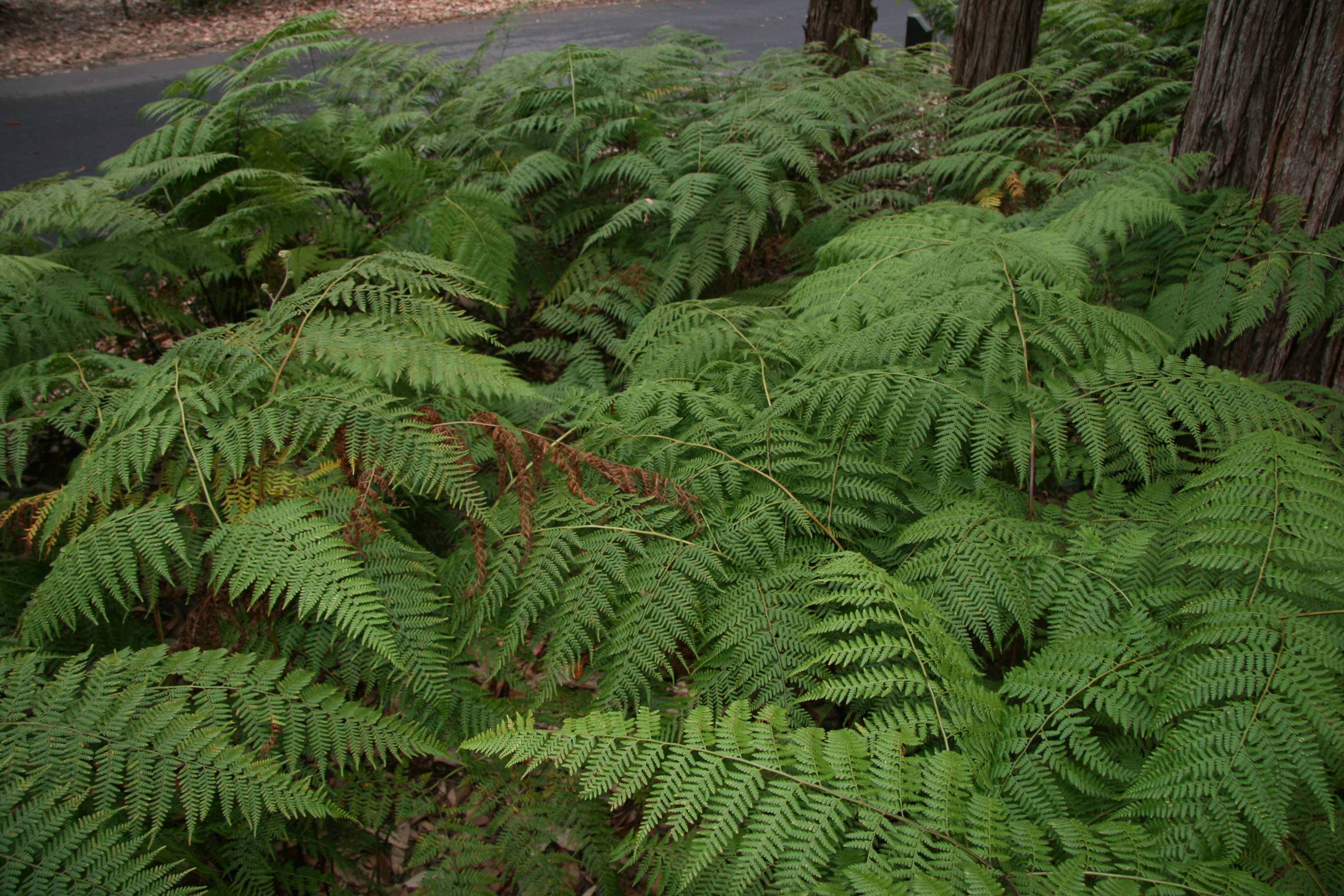Calochlaena Dubia on:
[Wikipedia]
[Google]
[Amazon]
''Calochlaena dubia'', commonly known as soft bracken, false bracken, common ground fern or rainbow fern, is a small Australian
 The
The
fern
A fern (Polypodiopsida or Polypodiophyta ) is a member of a group of vascular plants (plants with xylem and phloem) that reproduce via spores and have neither seeds nor flowers. The polypodiophytes include all living pteridophytes except t ...
in the treefern family Dicksoniaceae
Dicksoniaceae is a group of tropical, subtropical and warm temperate ferns, treated as a family in the Pteridophyte Phylogeny Group classification of 2016 (PPG I), and counting 30-40 species. Alternatively, the family may be sunk into a very broa ...
. It is very common within its range, and often seen growing under eucalyptus
''Eucalyptus'' () is a genus of over seven hundred species of flowering trees, shrubs or mallees in the myrtle family, Myrtaceae. Along with several other genera in the tribe Eucalypteae, including '' Corymbia'', they are commonly known as euca ...
forest, often on the poorer quality soils. It is an easy plant to grow in the garden.
Taxonomy
One of the many plants described by Scottish botanist Robert Brown in 1810, with the name '' Davallia dubia'', it gained its current name with the new genus ''Calochlaena
''Calochlaena'' is a genus of ferns within the family Dicksoniaceae. Although these ground ferns resemble bracken, they are only distantly related. Five species are known from Melanesia, Polynesia and eastern Australia. ''Calochlaena dubia'', is ...
'' described in 1988. The genus name is derived from the Ancient Greek
Ancient Greek includes the forms of the Greek language used in ancient Greece and the ancient world from around 1500 BC to 300 BC. It is often roughly divided into the following periods: Mycenaean Greek (), Dark Ages (), the Archaic peri ...
''kalos'' "beautiful" and ''chlaina'' "cloak", and refers to the soft hairs on the species, while the species name ''dubia'' is the Latin
Latin (, or , ) is a classical language belonging to the Italic branch of the Indo-European languages. Latin was originally a dialect spoken in the lower Tiber area (then known as Latium) around present-day Rome, but through the power of the ...
dubious. It was known for many years as ''Culcita dubia'', before the genus ''Calochlaena'' was split out in 1988.
The true bracken
Bracken (''Pteridium'') is a genus of large, coarse ferns in the family Dennstaedtiaceae. Ferns (Pteridophyta) are vascular plants that have alternating generations, large plants that produce spores and small plants that produce sex cells (eggs ...
s belong to the family Dennstaedtiaceae
Dennstaedtiaceae is one of fifteen families in the order Polypodiales, the most derived families within monilophytes (ferns). It comprises 10 genera with ca 240 known species, including one of the world's most abundant ferns, ''Pteridium aquilin ...
.
Description
 The
The frond
A frond is a large, divided leaf. In both common usage and botanical nomenclature, the leaves of ferns are referred to as fronds and some botanists restrict the term to this group. Other botanists allow the term frond to also apply to the lar ...
s arise from the thick brown haired rhizome
In botany and dendrology, a rhizome (; , ) is a modified subterranean plant stem that sends out roots and shoots from its nodes. Rhizomes are also called creeping rootstalks or just rootstalks. Rhizomes develop from axillary buds and grow hori ...
s and are anywhere from 0.4 to 1.5 m in height. The foliage is a more yellow green colour, in contrast to the darker shiny green of bracken (''Pteridium esculentum
''Pteridium esculentum'', commonly known as bracken fern, Austral bracken or simply bracken, is a species of the bracken genus native to a number of countries in the Southern Hemisphere. Esculentum means edible. First described as ''Pteris escul ...
''). The stipe changes from dark brown, through reddish- to yellow brown, and is covered with soft brown hairs. The fronds are triangular overall and tripinnate-pinnatifid in shape. The sori occur near the margin.
Distribution and habitat
''Calochlaena dubia'' is found as an understory plant in open forests and rainforests in eastern Australia, from Queensland, through New South Wales and Victoria into Tasmania. It can form large banks or swathes.Cultivation
Well suited to the garden, ''Calochlaena dubia'' is an easy plant to grow. In fact, it must be kept in check by cutting the rhizomes and given plenty of room. It does well on clay soils.References
Dicksoniaceae Flora of New South Wales Flora of Queensland Flora of Tasmania Flora of Victoria (Australia) Garden plants of Australia {{Cyatheales-stub